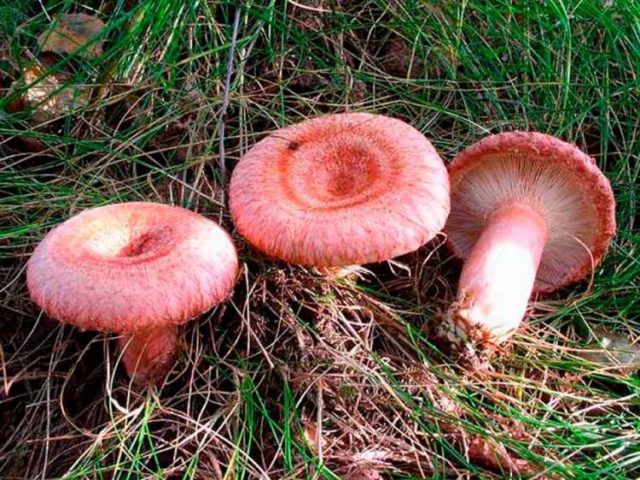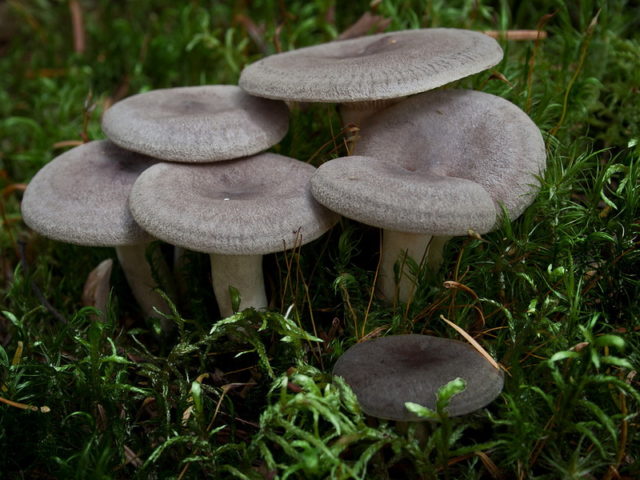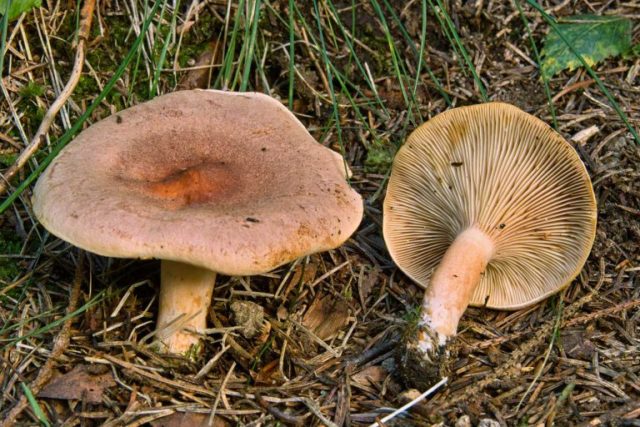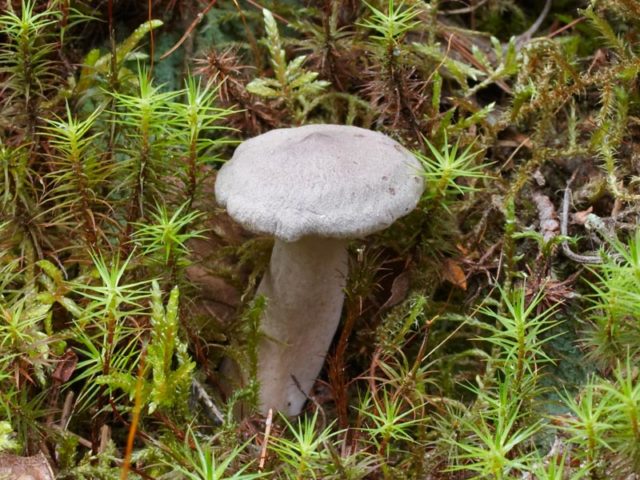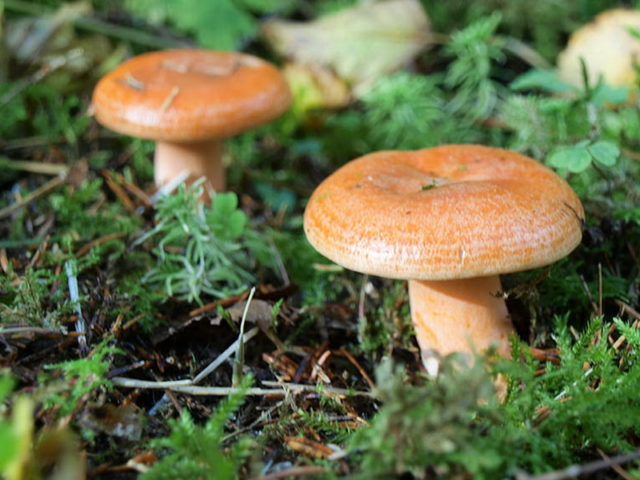Content
It can be quite difficult to distinguish false mushrooms from real mushrooms, but, nevertheless, the differences are quite obvious. In order to accurately determine which mushroom grows from the ground, you need to know what the doubles of the mushrooms look like and what features they have.
Are there false mushrooms
The variety with the name "false saffron milk" does not exist in nature. However, real red mushrooms have edible and inedible counterparts, very similar in structure and color. It is they who are called false and are recommended to carefully consider before putting them in the basket.
What mushrooms look like mushrooms
There are no frankly poisonous false saffron milk caps - all counterparts are conditionally edible or inedible due to poor taste. Nevertheless, it is necessary to know the differences between different mushrooms, since the methods of processing in real and fake mushrooms are very different, and if you incorrectly prepare a false species, you can seriously poison yourself.
Amber milkman
Millechnik belongs to the Syroezhkovy family and also bears the names of the roan milky, inedible milkweed and gray-pink milky. False species grows usually in mixed and coniferous forest plantations next to moss, often found under spruce and pine trees, in wetlands.
Most of the amber milkmen can be seen in August and September, although they appear in the forests as early as July.
Pink wave
Another double from the Syroezhkov family, which has its own differences, is a pink wave growing in mixed forests and birch groves. Usually found in wet areas, bears fruit actively in August and September.
Papillary lactic acid
The mushroom, also called a large mushroom, also belongs to the Syroezhkov family. Unlike previous false varieties, it prefers sandy light soils and is found most often in the northern regions next to birches. The peak growth of mushrooms, similar to saffron milk caps, is traditionally in August and early September.
What false mushrooms look like
To distinguish slightly edible or poisonous mushrooms, similar to saffron milk caps, you need to have a good idea of their external features. They have quite a lot of similarities, but there are also differences.
The appearance of the amber milkman
The false mushroom has a pinkish-brown or grayish cap with a tubercle in the middle part. At a young age, the cap is open and flat; as it grows, it acquires the shape of a funnel, and the edges of the cap are bent downward. Usually the skin on the surface is dry and glossy, but can become slippery on rainy days. The lower part of the cap is covered with frequent plates of a descending type, white, pinkish or beige in color.
The leg of the amber milkman is the same color as the cap, but a little lighter in the upper part. The mushroom grows to a height of 9 cm, the diameter of the leg can be up to 2 cm. In structure, it is rather loose, hollow from the inside. The mushroom on the cut has a light yellow fragile and friable pulp, does not change color from contact with air, but releases a watery juice.
The appearance of a pink wave
It is rather difficult to confuse a pink mushroom with a mushroom, but sometimes the differences between adult mushrooms are minimal.The wolf has a large, dense cap up to 12 cm in diameter, convex in young species and flat in adults. There is a small depression in the center of the cap, the edges are turned inward and pubescent, and concentric circles diverge along the surface of the cap. The color of the mushroom is similar to camelina, but paler - the wave is usually, in accordance with its name, light pink or grayish-pink, and the surface of the cap is slimy. From below, the mushroom is covered with white or pinkish frequent plates descending along the leg.
In height, the wave usually rises up to 6 cm above the soil surface. Its leg is cylindrical and firm, dense in young fruiting bodies, and hollow in adults. On the leg you can see small pits and fluff, the color is identical to the shade of the cap. The pulp is white, dense and juicy, does not change its color on the cut, releases white milky juice.
From the point of view of nutritional value, the pink wave is conditionally edible, it can be used for food, but only after long processing. Therefore, it is dangerous not to notice the differences and confuse it with a completely edible mushroom that almost does not require processing, a hastily cooked wave can easily be poisoned.
The appearance of the papillary lactic acid
The papillary papillary papillary is most similar to an orange mushroom in its structure. It also has a flat cap with a tubercle in the center, although in young mushrooms the cap is concave and straightens only as it matures. The diameter of the cap can reach 9 cm, it is dry and fibrous to the touch, and in color it is bluish-brown, gray-brown, slightly pinkish or even with a purple tint. Millers are often referred to as porcini mushrooms, similar to saffron milk caps, because, depending on the conditions, they can be very light. The plates on the underside of young papillary lactic acidae are whitish, while in adults they are red, narrow and frequent, descending to the peduncle.
The mushroom rises above the ground by an average of 7 cm in height, its stem is cylindrical and thin, up to 2 cm in diameter. In an adult milkman, the leg is hollow inside and smooth, it is light in color at a young age, but then it acquires the shade of a hat.
If you cut the papillary lactate, then the pulp will be dense, but brittle and uneven. On the cut, the false appearance releases a small amount of milky juice, both pulp and juice are white in color.
The mushroom belongs to the category of conditionally edible - it smells like coconut, and the taste is bitter and unpleasant. Therefore, before eating it, it is soaked for a long time in salted water to improve its taste, and it is most often used in salting.
How to distinguish a mushroom from a false mushroom
The main similarity between real and false mushrooms lies in the structure of the cap and stem. True saffron milk cap, like poisonous twins, has a wide cap with a small depression in the center and curved edges. On the surface of the hat, you can often see diverging circles, because of this it is confused, for example, with a pink wave. The underside is also covered with thin plates, and the leg has a cylindrical shape.
Since there are many varieties of real orange mushrooms, it is often difficult to distinguish a false mushroom from a true one in color. The mushroom can have orange, brownish, gray-brown, brown, greenish or pinkish color, the color depends on the species, on the place of growth, on age.
However, there are quite enough differences in a real saffron milk cap:
- The main difference is the color of the milky juice. If you cut a real mushroom, then its pulp will release a certain amount of orange or reddish liquid. False counterparts tend to have white sap. In addition, the milky juice of camelina in the air quickly turns green or turns brown, but the juice of false counterparts does not change its hue.
- A similar difference applies to the pulp. At the break, the true species is usually orange or pinkish in color, and its flesh also quickly changes color from contact with air - it turns green or reddish depending on the species.This is not typical for false doubles, after a while their pulp on the cut can only turn slightly yellow.
- Another difference is that if you press down on the plates of spruce, pine or red saffron milk cap, then a greenish spot will remain under the finger.
The difference between false and real saffron milk lies in the places of distribution. True species grow mainly in coniferous forests - pine forests form a symbiosis with pines, spruce trees are found under spruce trees. In birch forests and mixed plantings, they can be found less often, in contrast to false ones, which are widespread everywhere.
Conclusion
It is quite simple to distinguish false mushrooms from real mushrooms, suitable for consumption - the main differences lie in the color of the milky juice and pulp. However, if there is the slightest doubt, it is better to refuse the mushroom and leave it in the forest.

